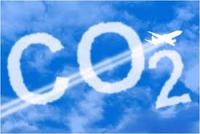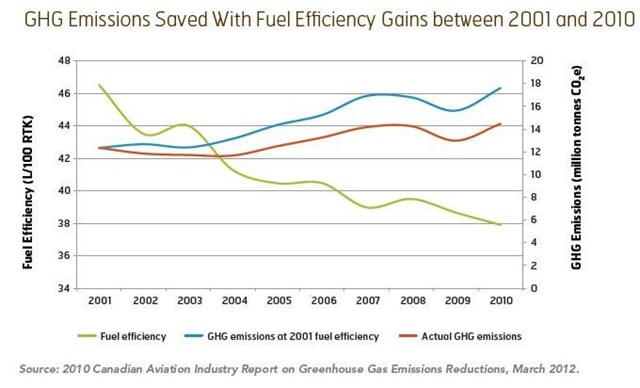Federal government releases plan to tackle airline emissions
 The federal government has released details of a new plan to reduce aviation emissions and to lower fuel costs.
The federal government has released details of a new plan to reduce aviation emissions and to lower fuel costs.The Plan “Canada’s Action Plan to Reduce Greenhouse Gas Emissions from Aviation” was developed by the Government of Canada in concert with the Canadian aviation industry.
The Plan aims to increase efficiency and improve environmental performance in the aviation sector. It sets out specific measures to improve fuel efficiency and includes commitments from the Government of Canada, the Aerospace Industries Association of Canada, the Air Transport Association of Canada, the Canadian Airports Council, the Canadian Business Aviation Association, the National Airlines Council of Canada and NAV CANADA.
“We have a plan and continue to make progress on reducing Canada’s GHG emissions,” said Environment Minister Peter Kent. “We are one-quarter of the way towards meeting our Copenhagen target.”
The announcement was made at the Canadian Aviation and Space Museum in Ottawa as part of Environment Week.
Minister Kent noted that the Action Plan will form the basis of Canada’s response to the International Civil Aviation Organization’s (ICAO) Assembly Resolution A37-19.
That Resolution, adopted in October 2010, set voluntary goals for international aviation emissions and encouraged Member States to submit national action plans by June 2012 outlining their respective policies and actions.
It forms part of a broad based approach to counter the inclusion of civil aviation emissions in the European Emissions Trading System (EU-ETS), a move which has been contested by civil aviation giants such as Canada, the United States, India, China and Russia. There is no mention of the EU-ETS in the Plan, or any reference to carbon trading as a means to encourage emissions reduction in the aviation sector.
Key Details of the Plan
The Action Plan sets an ‘aspirational goal’ to improve fuel efficiency from a 2005 baseline by an average annual rate of at least 2 per cent per year until 2020, which is in line with ICAO’s global targets, and which will be achieved through specific measures, such as fleet renewal and upgrades, more efficient air operations, and improved air traffic management.
To help achieve this goal, the Action Plan identifies three key measures that are expected to have the greatest impact:
•Fleet Renewals and Upgrades - Retiring older airplanes and bringing newer, more efficient airplanes into service is expected to lead to an average annual fuel efficiency improvement of 0.7 per cent between 2005 and 2020.
•More Efficient Air Operations - Canadian airlines undertaking more efficient air operations is expected to lead to an average annual fuel efficiency improvement of 0.2 per cent between 2005 and 2020.
•Improved Capabilities in Air Traffic Management - The shift from sensor-based to performance-based navigation is expected to enable improvements in average annual fuel efficiency by 1 to 2 per cent between 2005 and 2020.
It also includes additional measures that will contribute to achieving increased efficiency, such as alternative aviation fuels, airport ground operations, and infrastructure use.
The Action Plan builds on the success of the world’s first voluntary Memorandum of Understanding between Transport Canada and Canadian airlines to reduce greenhouse gas emissions from aviation, which has been in place since 2005.

That agreement set a goal of a 1.1 per cent average annual improvement in fuel efficiency for each year to 2012, a cumulative improvement of 24 per cent, from a 1990 baseline. The Air Transport Association of Canada and the National Airlines Council of Canada report annually on progress achieved under terms of the agreement.
As of 2010, the industry has achieved a 1.9 per cent average annual fuel efficiency improvement since 1990, or a 31 per cent cumulative improvement, surpassing the objectives of the agreement.
You can return to the main Market News page, or press the Back button on your browser.

